2020 Update: I believe marestail will be a problem this fall and require an alternate herbicide as the majority of marestail in eastern Nebraska is resistant to glyphosate and ALS-inhibiting herbicides. Amit Jhala
As the 2023 corn and soybean harvest begins to wind down, we would like to encourage growers to take a proactive approach to managing winter annual weeds prior to the onset of winter. Winter annual weeds typically emerge in late summer and fall, survive throughout the winter, and produce seeds during late spring or early summer the following year. Fall control can prevent potential yield reductions associated with delaying removal until corn or soybean planting the following year.
UNL Weed Management Scientist Amit Jhala, explains why fall control of winter annuals is important in this Oct. 24, 2014 Market Journal interview.
With recent precipitation, many winter weeds are actively emerging. These weeds require undisturbed soils from fall through early summer of the following year to complete their life cycle, and no-till soil management favors this environment. The most common winter weeds in Nebraska are: henbit, marestail, field pennycress, downy brome, dandelion, shepherd's-purse, tansy mustard, and prickly lettuce. In addition, little barley, evening primrose, and field pansy have been observed in many fields. The first step in effective weed management is being able to accurately identify the weeds.
Here are tips to properly identify fall emerging weeds:
Henbit
Henbit is a winter annual (sometimes biennial) herb found in cultivated areas, field, roadsides, or lawns.
Flowering period: March-May
Distinguishing features: The plant is 4 to 12 inches tall having squared green-stem (often becoming purplish in later stage) and reddish purple to pink flowers. The leaves are opposite, clasping the stem in the top portion and leaf-margins are crenate and lobed. The whole plant is sparsely covered with fine hairs. Stem branches frequently root from the nodes. The foliage and stems of henbit are aromatic.
Seedling characteristics: It has a 3-12 mm long, oval-shaped cotyledon with a smooth surface. The petiole is green or purplish and has spreading hair.
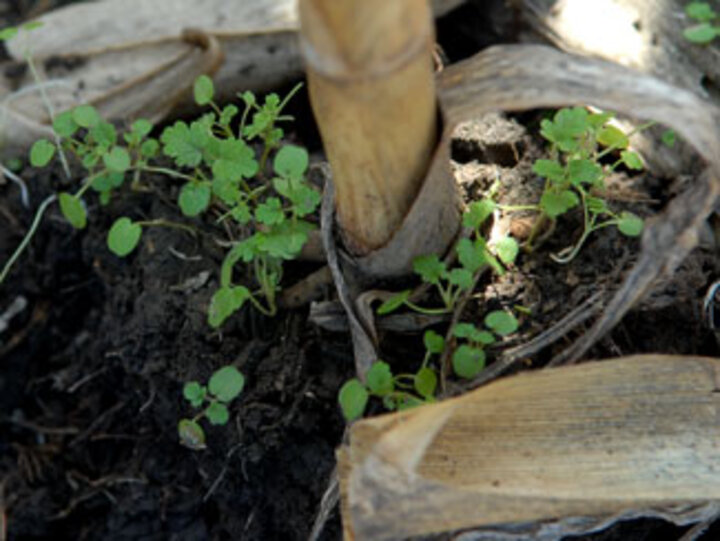
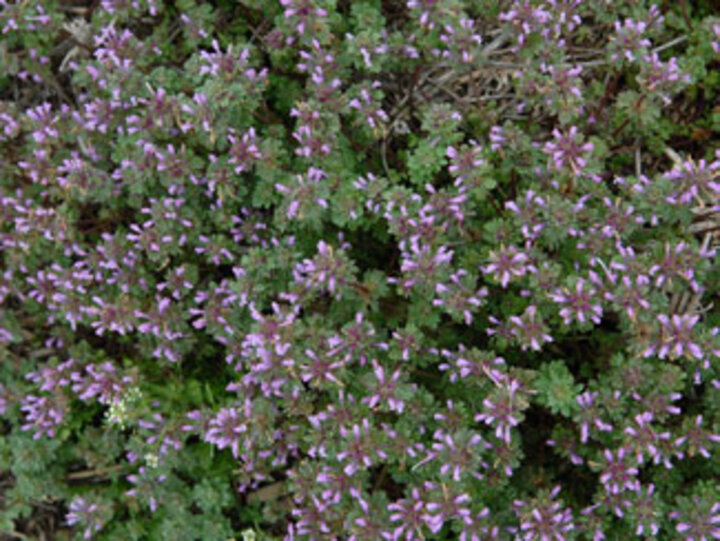
Marestail
Marestail, also known as horseweed, is an annual weed that has a winter or summer annual life cycle. They usually germinate in fall but can germinate in mid-summer when conditions are favorable. Plenty of marestail can be found in no-till fields as well as in cultivated areas, pastures, and roadsides. Marestail contains volatile oils, tannic acid, and gallic acid that may cause skin and mucosal irritation in humans and livestock. Glyphosate-resistant marestail has been confirmed in Nebraska. This is a serious issue and growers should be on the lookout for possible occurrences this fall.
Flowering period: June-September
Distinguishing features: This is an erect herb that has coarsely hirsute stem and leaf surfaces and can be 1.5 to 6 feet tall. It tends to be unbranched unless the plant has been damaged by herbicides or mowing, but it may have branching at inflorescence. Leaves are alternate and crowded on the stem. Flowers are white to pink (ray florets) with yellow centers (disk florets). After fall germination it forms a rosette-like structure. (The larger the rosette is in the fall, the greater its chances of surviving through winter.) Depending on growing conditions, the survival rate of fall-emerged marestail is 14%-84% of total germinated weeds.
Seedling characteristics: Seedlings are also covered by coarse hairs. The margins of the first leaves of rosette are mostly entire or round, but subsequent leaves might be apically projected and toothed.
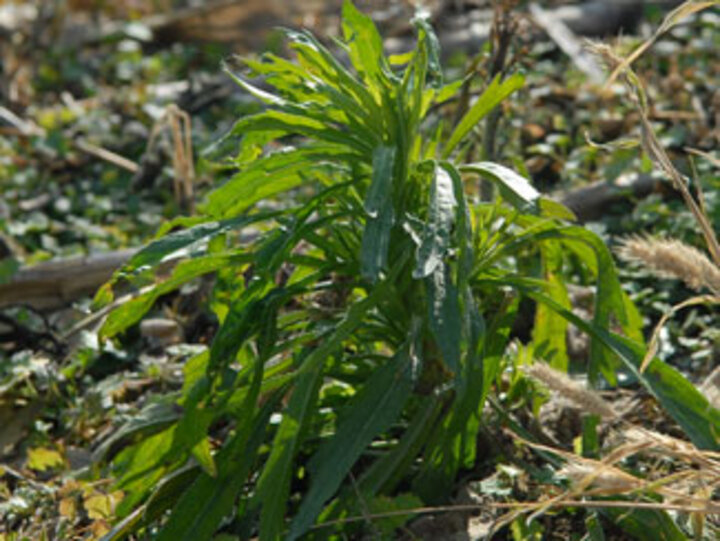
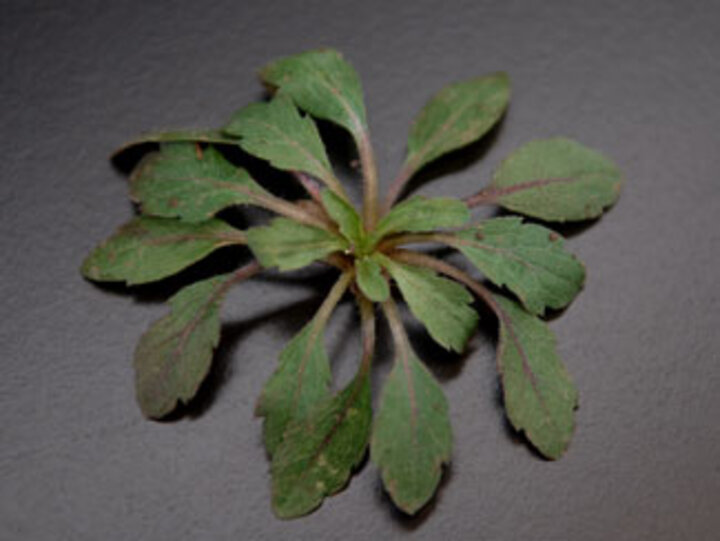
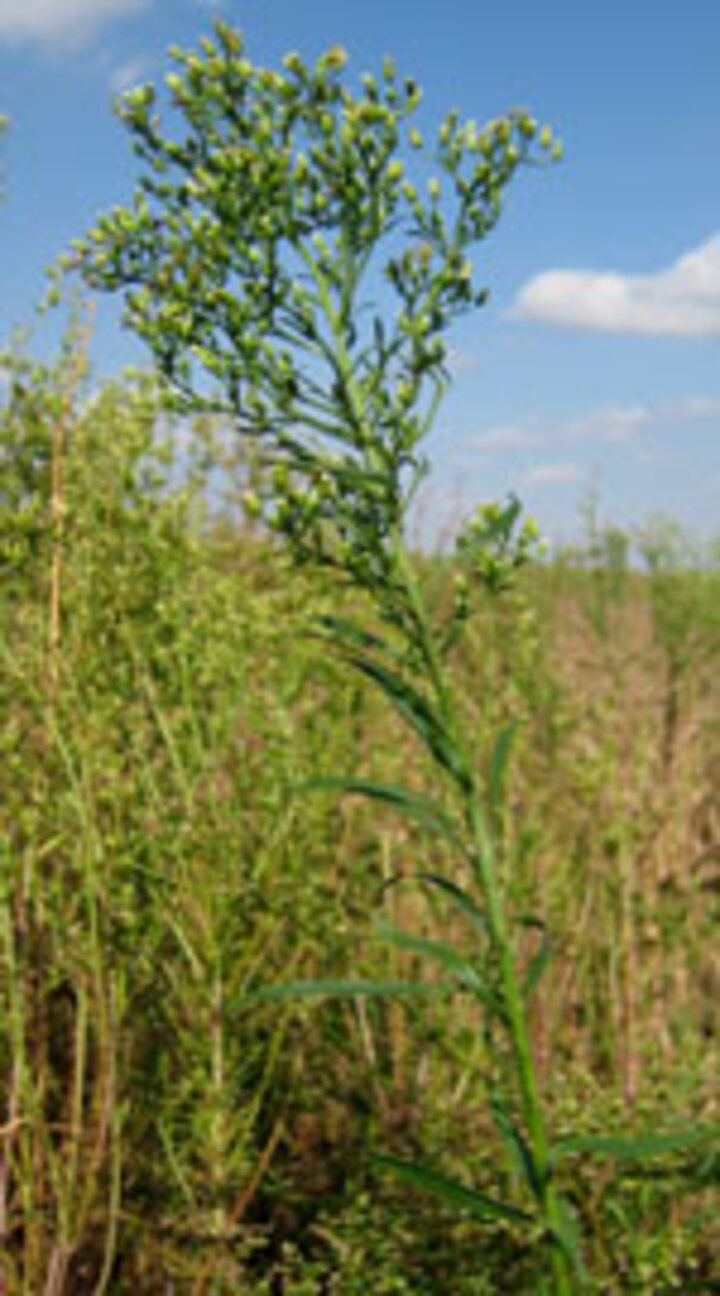
Field Pennycress
Field pennycress is a winter annual that can be found in fields, pastures, roadsides, and in disturbed lands. Field pennycress seeds contain a chemical (allyl isothiocyanate) that causes gastric distress in livestock. When the seeds are consumed, cows produce milk with a bitter garlic odor and flavor.
Flowering period: April- June
Distinguishing features: The stem is erect, branched or simple, and 1 to 2.6 feet tall. Leaves are alternate and clasping the stem. It forms a basal rosette with the leaves. Lower leaves have entire or coarsely toothed margins with blunt tips, while upper leaves have coarsely toothed margins with a projected leaf tip. Fruits are flat, circular, or rounded-oblong. They are notched at the tip, separating into two valves.
Seedling characteristics: Cotyledons are bluish-green and long-stalked. They are ovate-shaped with a prominent mid-vein and slightly toothed margin.
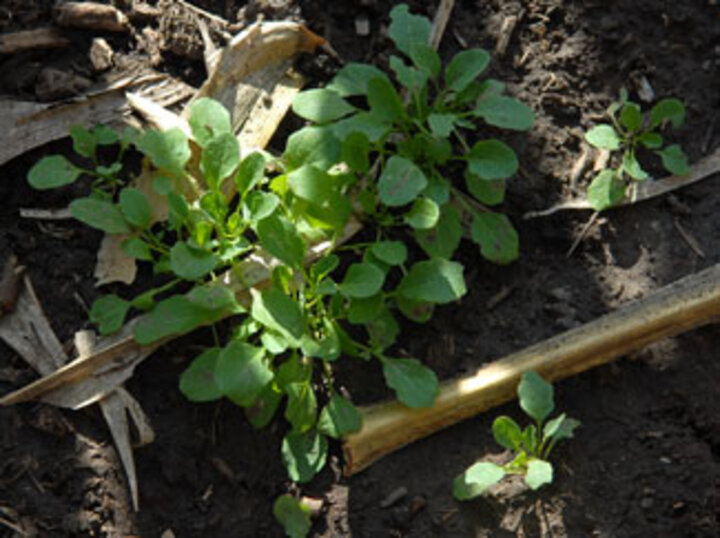

Downy Brome
Downy brome is a winter annual grass that can be found in cultivated areas, fields, pastures, roadsides, and waste sites. Long awns of downy brome may injure grazing animals and cause tetanus.
Flowering period: Late April- May
Distinguishing features: Plants are 0.3 to 2 feet tall. Leaf sheaths, leaf blades, and nodes are covered with soft hairs. Usually the leaves twist clockwise. It has a membranous (1-3 mm long) structure at the base of the leaf where the leaf blade and leaf sheath (i.e. ligule) meet. Long awned spikelets form panicles (inflorescence) that are dense, soft and either drooping or nodding.
Seedling characteristics: Seedlings are light green with soft hairs on the leaf sheath and blades. Leaves show clockwise twisting.


Dandelion
Dandelion is an annual or perennial weed invasive in turf, flower gardens, forage, and no-till fields. It grows from seeds during fall.
Flowering period: April-October
Distinguishing features: The erect plants are 2 to 20 inches high and have a basal rosette crowded by deeply notched leaves. Stems and leaves contain milky sap. The bright yellow dandelion flower is 1 to 2 inches wide. Each flower head contains hundreds of ray florets. Later the flower heads turn into white globular seed head. Each seed has a white parachute that facilitates travel on the wind.
Seedling characteristics: It has a rosette that's 2 to 6 inches long with basal leaves formed above the central root system.
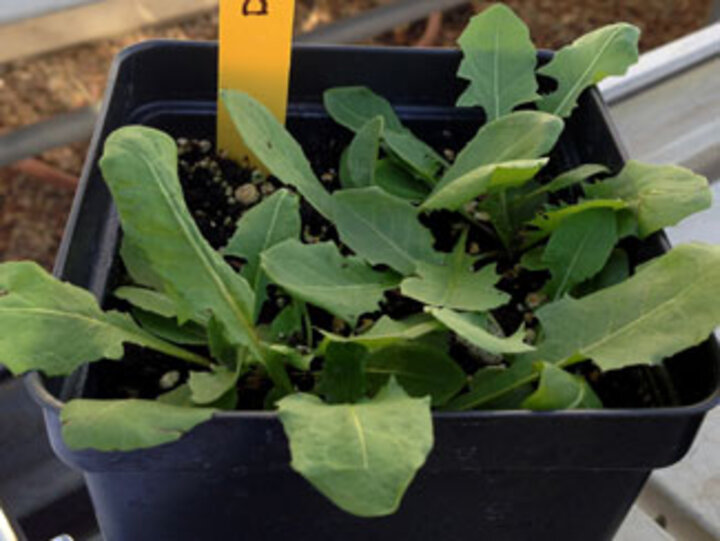

Shepherd's-purse
Shepherd's-purse is a winter annual (rarely biennial) mostly found in cultivated areas, fields, lawns, gardens and roadsides. The seeds of shepherd's purse need cold temperatures to break dormancy and germinate when the soil temperature goes below 60°F.
Flowering period: March- November
Distinguishing features: The leaves are alternate, forming a basal rosette. They are pinnately lobed and smaller apically. The flower stalks (called raceme) are unbranched to slightly branched. The plant will be 6 to 18 inches tall and bear white flowers. The fruits of shepherd's purse are triangular- or heart-shaped.
Seedling characteristics: Cotyledons are round or spatulate in shape and may be slightly indented at the tip.
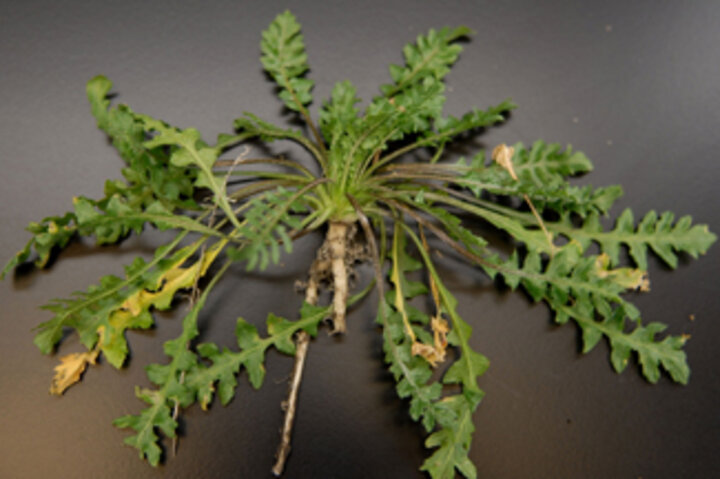
Tansymustard
Tansymustard is a winter annual that can be found in rangeland, roadsides, and fields. It contains toxic levels of nitrate and is harmful for cattle to consume.
Flowering period: March-August
Distinguishing features: The leaves are segmented in a narrow pattern. Plants are 0.3 to 2.9 feet tall with simple or branched stems. Flowers are bright yellow and fruits (called silique) are club-shaped similar to mustard fruits.
Seedling characteristics: Seedlings are reddish green to purple.
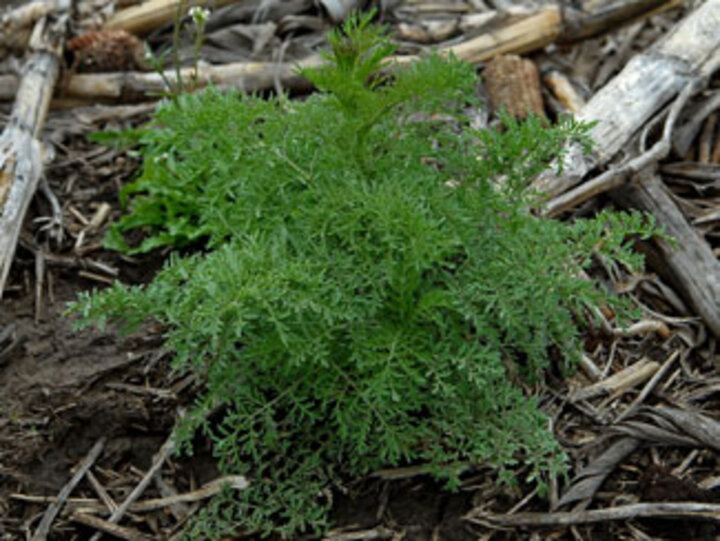

Prickly Lettuce
Prickly lettuce is a common winter annual found throughout the Great Plains in disturbed habitats, roadsides, gardens, pastures, and cultivated fields. It causes pulmonary emphysema in cattle when consumed in large quantity.
Flowering period: July-September
Distinguishing features: Leaves are alternate and deeply dentate. Middle to lower leaves have stiff bristles along the bottom mid-rib. Stems contain a substance that looks like white latex. Each flower head contains up to 25 yellow flowers. Each flower looks like a small dandelion flower.
Seedling characteristics: Seedlings exist as a basal rosette until flowering stems develop.
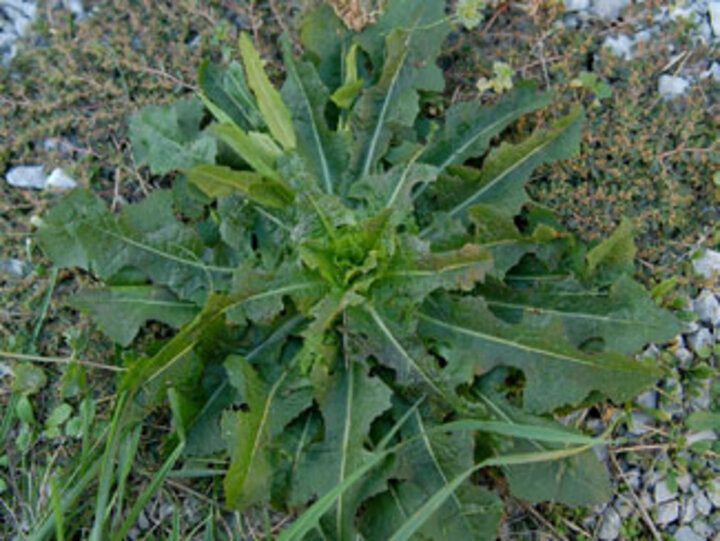

Treatment
Several herbicides have been registered for control of fall emerging weeds. The CropWatch article Managing Winter Annual Weeds Starts this Fall provides good information for fall weed management. For more details about herbicide options for fall emerging weeds, see the Guide for Weed Management in Nebraska, EC 130.
Resources
The following reference books are recommended for weed identification:
- Identification of Winter Annual Weeds. Extension Circular 304.
- Weeds of the Great Plains, written by J. Stubbendieck, M. J. Coffin, and L. M. Landholt, and published by the Nebraska Department of Agriculture. Cost is $25. The NDA accepts credit card orders by phone by calling 402-471-2394.
